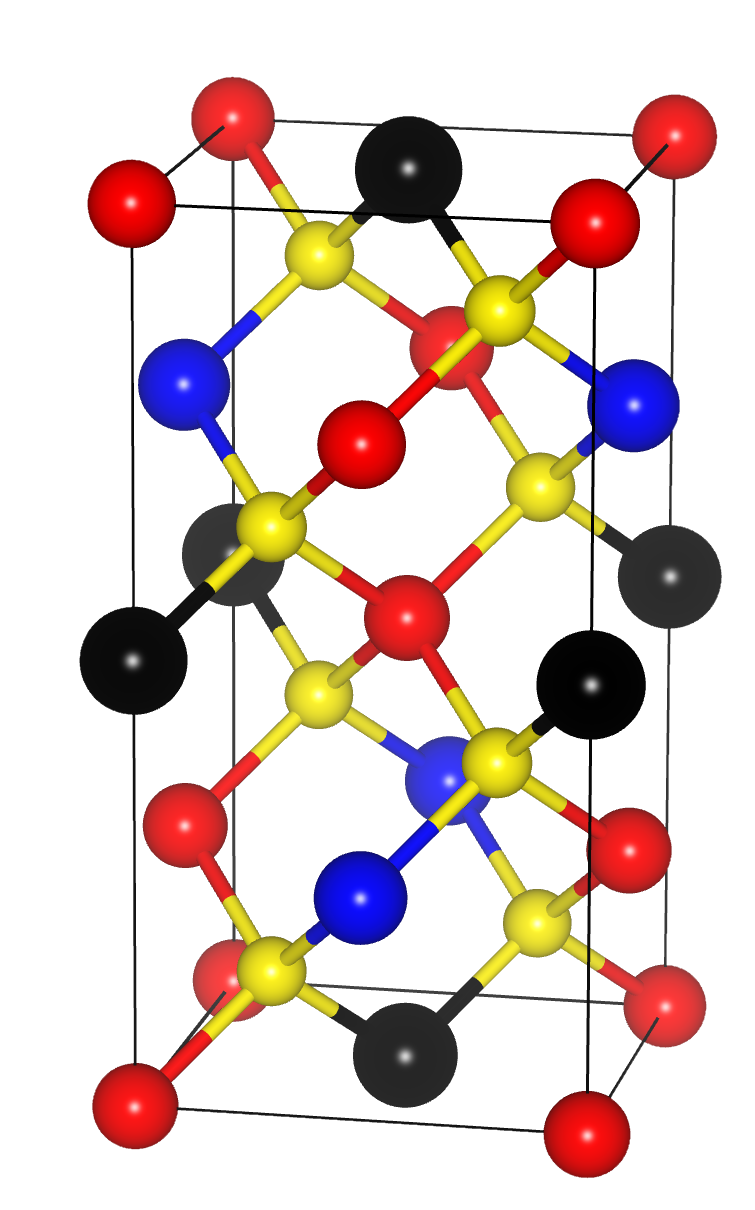The work has resulted in a pair of published papers, in the Journal of Materials Chemistry A and Chemistry of Materials. The combined studies investigated a material that could be crucial in solving one of the most important global issues we face - the generation of increasing amounts of clean electricity. A team of researchers conducted high-resolution structural studies of Cu2ZnSnS4, and their results bring us a step closer to the goal of producing solar power at the TW scale.
Two unique facilities, one goal
Solar photovoltaic (PV) electricity will be an important contributor to the energy mix of the future. Last year it contributed nearly 2% of global electricity demand, reaching 307 GW peak global capacity. By 2050, it is predicted to contribute 16% of global electricity use. However, for that to happen significant developments to PV cells will be required, to make them with a higher efficiency, for a lower cost. Many of the current materials used in their manufacture are problematic, whether due to their high cost, scarcity or toxicity. Cu2ZnSnS4 (CZTS) is a highly promising material that has none of these issues, but which currently has a low PV efficiency, believed to be due to defects in its crystal structure.
For CZTS to be adopted commercially, its efficiency needs to be doubled. To improve its performance we need to develop a better understanding of the complex structure of this material, including the secondary phases, defects and cation disorder within the crystal structure, and their impact on PV device performance.
The aim of these studies was to improve the structural understanding of CZTS by performing both high-resolution neutron diffraction and high-resolution non-resonant and anomalous X-ray powder diffraction (XRD) experiments on samples over a range of compositions.

|
Figure 1: Depiction of the CZTZ unit cell kesterite structure.
|
High-resolution neutron diffraction
The team carried out powder neutron diffraction measurements at HRPD, the highest resolution neutron powder diffractometer of its type in the world. Their work produced the highest-resolution neutron diffraction study of CZTS, unambiguously identifying the crystal symmetry and accurately quantifying precise values for the disorder on all cation symmetry sites as a function of temperature.
Patterns were taken for two samples, at regular 10 K intervals from 4 to 480 K, and then at higher temperatures: at 25 K intervals from 300 to 1275 K, for one and at 20 K intervals from 460 to 640 K for the second.
An order–disorder phase transition was observed in both samples, at lower temperatures than previously reported. A different transition temperature in each sample suggests that the transition mechanism is sensitive to composition, which is important information for the fabrication procedure of CZTS PV cells. In principal, the disorder (and hence efficiency) can be controlled during the cooling process.
Their results provide new insights into the high levels of disorder present in CZTS and confirm that composition and cation disorder have a significant effect on the phase transition mechanism. This work will enable the development of routes to the fabrication of higher-efficiency PV devices.
High resolution anomalous synchrotron powder diffraction (SXPD)
The team moved to Diamond to use SXPD. It is not possible to resolve the exact disorder in CZTS samples using conventional XRD, which is used for other materials. In CZTS the copper and zinc ions are isoelectronic, and their X-ray scattering form functions are the same. It's also not usually possible to detect the most common secondary phases in CZTS via XRD, because the diffraction peaks overlap within the resolution of standard equipment. The solution to these difficulties is to use the high resolution offered by a synchrotron instruments, combined with anomalous SXPD, which measures the variation in atomic scattering factor for energies close to the K-absorption edges. This allows accurate identification of all phases in CZTS samples, and the defects within the crystal structure.
Using the High Resolution XRD and Extreme Conditions beamlines (I11 and I15) at Diamond, the team determined the crystal structures of three CZTS samples at ambient temperature conditions with the highest accuracy and precision to date. The diffractograms show minute splitting of some diffraction peaks, evidence of two distinct crystalline phases. The high resolution allowed these phases to be differentiated for the first time, establishing polymorphic behaviour in CZTS. Above the order-disorder phase transitions these generally converge into a single phase. Again, this has important implications for the fabrication of efficient PV cells from CZTS.
These two high-resolution studies, combining data from both ISIS and Diamond, have paved the way for more efficient PV cells and the clean electricity of the future. Further work will be needed to study the reproducibility of the phase formations through several cycles of heating and cooling, and a theoretical study of this more complex phase diagram will also further our understanding, but the potential of CZTS has been confirmed.
Further information
Bosson CJ et al. Cation disorder and phase transitions in the structurally complex solar cell material Cu2ZnSnS4. Journal of Materials Chemistry A 5.32, (2017). DOI: 10.1039/C7TA03603E.
Bosson CJ et al. Polymorphism in Cu2ZnSnS4 and new off-stoichiometric crystal structure types. Chemistry of Materials (2017). DOI: 10.1021/acs.chemmater.7b04010.
Further details on proposals requiring access to both ISIS and Diamond can be found here .
